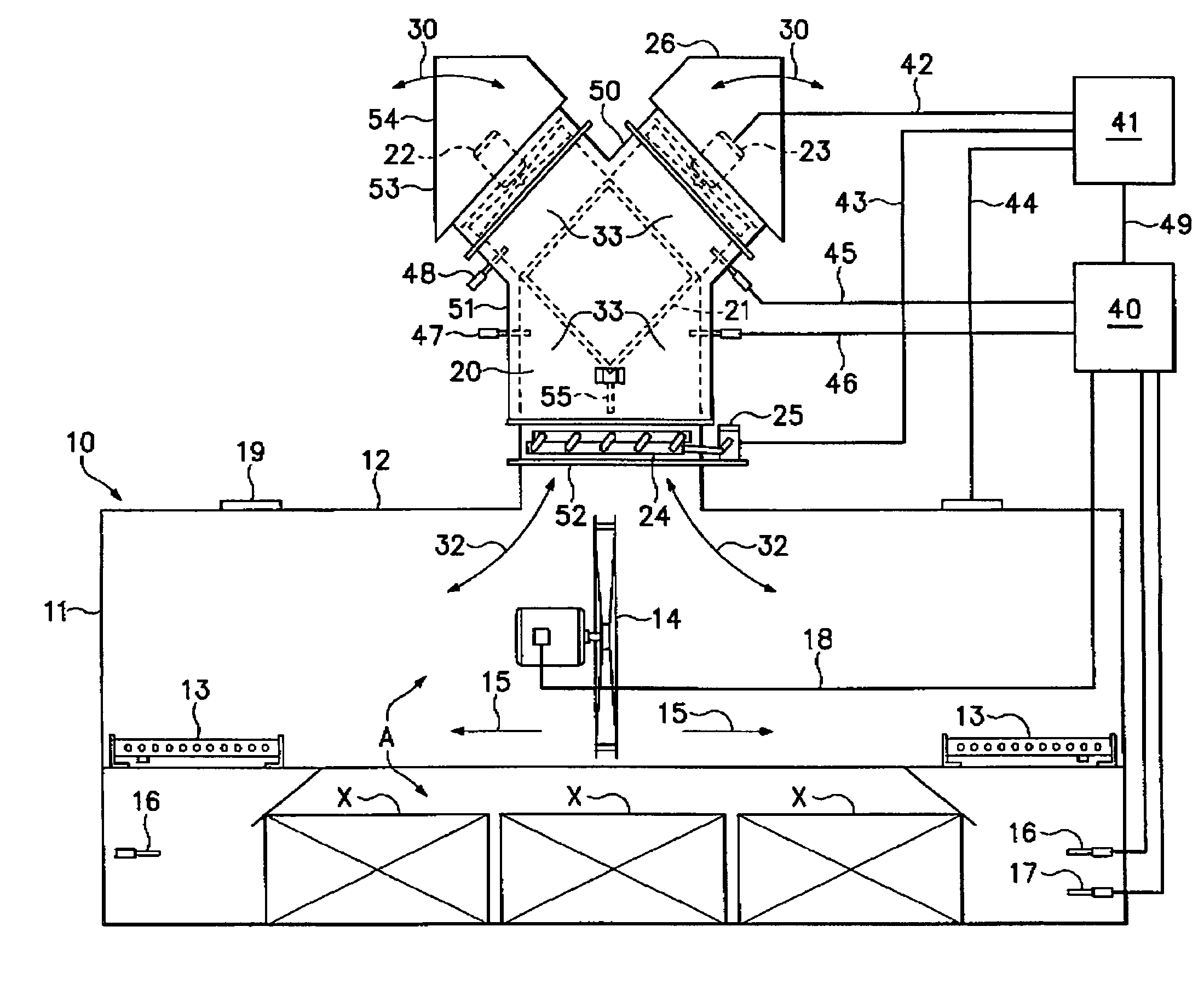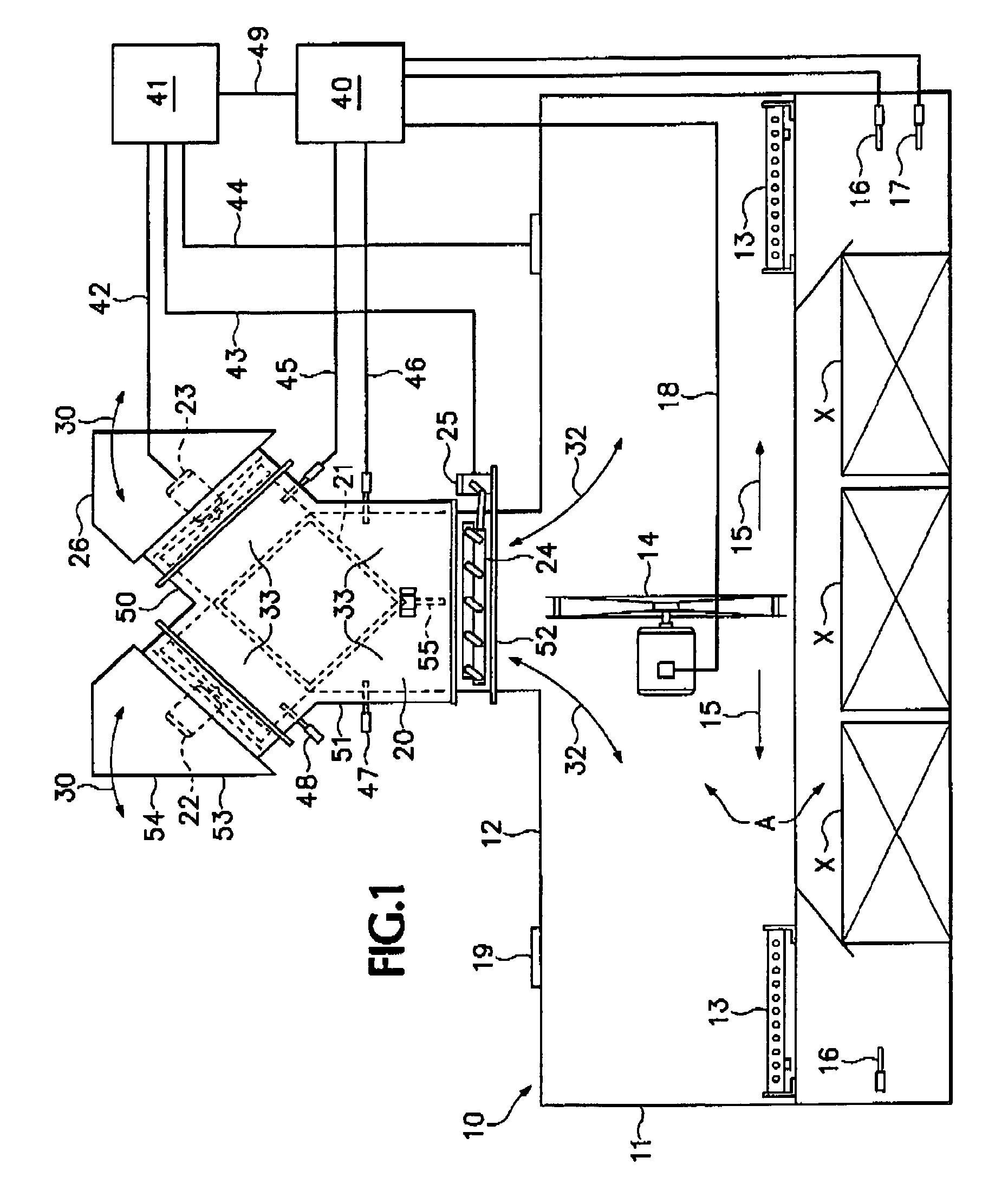Systems for drying moisture-containing work pieces and methods for drying same
a technology for drying systems and work pieces, applied in the direction of manufacturing tools, lighting and heating apparatus, furnaces, etc., can solve the problems of preventing the operation of two fans in either a full exhaust or a partial exhaust, causing the loss of circulation air, and causing the loss of moisture. , to achieve the effect of reducing drying time, preventing the loss of circulation air, and reducing energy costs
- Summary
- Abstract
- Description
- Claims
- Application Information
AI Technical Summary
Benefits of technology
Problems solved by technology
Method used
Image
Examples
Embodiment Construction
[0025]Referring now to FIG. 1, a diagrammatic representation of a system 1 is provided which is employed in combination with a building 10, having enclosing walls 11 and roof 12, for controllably drying moisture-containing work pieces “X”. System 1 is typically a power venting heat recovery system 20 and the associated programmable controller system 41, which is preferably a programmable logic controller system. System 1 can be a ThermoVent System manufactured by American Wood Dryers, Inc. of Clackamas, Oreg.
[0026]Work pieces “X” are typically lumber which is dried employing heating system 13, which is typically a conventional kiln heating system. Heating system 13 is located within the building 10 and is in communication inline with an air circulation system 14, which is typically a conventional kiln dryer circulation system. Air circulation system 14 is designed to move air over the work pieces X located in a workspace “A” in the building 10. The air circulation system 14 can reve...
PUM
 Login to View More
Login to View More Abstract
Description
Claims
Application Information
 Login to View More
Login to View More - R&D
- Intellectual Property
- Life Sciences
- Materials
- Tech Scout
- Unparalleled Data Quality
- Higher Quality Content
- 60% Fewer Hallucinations
Browse by: Latest US Patents, China's latest patents, Technical Efficacy Thesaurus, Application Domain, Technology Topic, Popular Technical Reports.
© 2025 PatSnap. All rights reserved.Legal|Privacy policy|Modern Slavery Act Transparency Statement|Sitemap|About US| Contact US: help@patsnap.com


